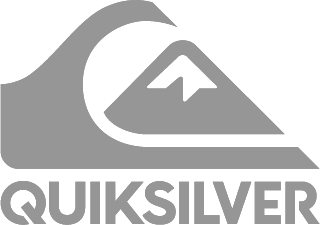Peter Glenn Dryland Training Guide: Week 4
by Jonny Moseley on Apr 20, 2020
 Jonny Moseley here. Today I’m taking over The Dryland Training Guide. Inline skating was always a staple in my cross training regimen but this is the first time my boys have tried it. Like you, we’ve been cooped up at home for a while and we are always looking for something fun to get into. Enter the Blades.
Jonny Moseley here. Today I’m taking over The Dryland Training Guide. Inline skating was always a staple in my cross training regimen but this is the first time my boys have tried it. Like you, we’ve been cooped up at home for a while and we are always looking for something fun to get into. Enter the Blades.
Lots of the drills and techniques we practice on the ski hill translate easily to skates. For example, driving the bottom hand through to finish the turn is something important for all skiers to remember. It’s easy to work on this skill with repetition on skates. On the mountain, I yell at my kids as they ski past or tell them on the chair but on skates I can yell at them from close up.:) Below you’ll find some of the drills we did together and some ideas to make sure your first day on skates goes smoothly. I took a lot of ideas from the Skate to Ski Guide. I recommend you check it out. Remember to tag us in your workout with #pgworkout
Getting Started
One of the most important parts of skating, especially if you’re skating with beginners, is having the right set up. A flat, straight road is ideal and if you can find a cul-de-sac, even better. I put folding chairs at one end of our “course” and found that the boys had a much easier time starting from a high seat. The chairs were also a great place for them to take a little break but still feel part of the action.
I anticipated some crashes so we used a full set of pads (and helmets of course). Wrist Guards are a must. The boys were shaky at first but within 10 minutes, the comfort level increased exponentially. Beginners with ski experience will find some of the skills translate fluidly to the skates.
Practicing Lead Change with a Circle Drill
I had them start out going in a circle to get them comfortable on their skates- a larger radius is better . I placed the chairs at the center for a visual cue. My younger son, Tommy, used a hockey stick initially and that was helpful. He used it as a crutch, for balance and it also gave him confidence. He didn’t use it for long, but it was a great tool when we were getting started.
Before you ‘go’, you need to know how to ‘stop’, so we worked through the braking right away. There’s a small slope in our cul de sac and you don’t need much angle to pick up speed, so the brake helped them get in control and stay on their feet.
The circle was a great opportunity to teach them about lead change. When you’re turning, advancing the inside foot is the best way to go in the direction you want.
It’s been about 15 years since I put on a pair of inline skates and in that time, the wheels have come a long way. They are a lot bigger so they are more forgiving. In the past, you would feel every pebble but now you can roll over all kinds of different structure and pavement fairly smoothly which makes for a safer and more pleasant experience.
Slalom Turns
The next step is putting the lead change drill into practice, so I set up cones (roughly six feet apart) and fashioned a slalom course. The feeling is a little different from skiing because without the benefit of gravity, skaters need to generate their own speed.
I focused on lower leg angulation and rotation. The Skate to Ski videos focus on this element and I can see why. Proper angulation allows you to make tighter turns with more control. Driving the outside hand through the turn is important for learning to accelerate out of the turn.
Matching Shin Angles
Modern racing technique requires the skier to get the uphill knee tilted into the hill (to create matching shin angles) instead of a-framing. This is a constant struggle but inline skating is a good way to train this coordination. I let the boys take a break, while I ran through the course. In this drill, we train both matching shin angles AND lead change. Setting up a wider course gives you a chance to work on hip movement, taking a more aggressive cut with every turn.
***It will feel awkward at first but you will know you are on the right track when your inside pinky toe is pressing into the boot.
Biggest Takeaway - Learning About Angulation
Eventually, we moved down the road to a stretch with a very slight decline, and I set the cones farther from the center line to mimic a giant slalom course. Tommy was begging for more so I ran him through the course a few times and he loved it!
The wider course forced Tommy to recognize the importance of angulation and see the effects of a high edge angle. When skiing, things are often moving quickly and you can cover for a lot of sins, but blading is less forgiving and flaws are easier to diagnose.
Just to get a feel for it, you can try it out at home without the skates. Sitting in a chair with your feet flat on the ground and parallel, tilt your shins from side to side. Notice which muscles in your hips need to activate to work through this range of motion.
Any activation of these muscles in the offseason is helpful and will translate to a better season when we get back on the hill.
Don’t Forget to Flex Those Ankles
Although ski boots are stiff, keeping an acute angle in your ankles forces your body to engage the correct muscles all the way to your upper back. Many skiers are told to lean forward into the tongue of their boots. Leaning into the front of your boots without engaging the muscles to hold you there will only result in your feet shooting out from under you once your boots are loaded up from the pressure on the ski.
Blading is a great way to strengthen your ability to maintain the angle between your foot and shin as well as the angle between your shin and quad and the angle between your back and quad. In general I like to imagine my back being parallel to my shins.
On skis, you can get away with leaning back on the tails which leads to bad habits. On inline skates, standing too tall with no ankle flexion will result in an uneasy feeling of falling on your bum as Tommy demonstrates in the video. Focus on keeping a kink in your ankles and trying to keep a flat back- parallel to your shins. This should naturally put you in the right position and build the appropriate muscles in your legs and lower back.
Good Luck and Have Fun.
If you’re looking for the complete program (which is what I used to get some ideas ) you can find it as well as downloadable plans and other helpful guides on our skate to ski page.
You can also check out the Peter Glenn workout playlist on YouTube and visit our blog weekly as we continue to share workout tips and ideas to keep you in shape! Also, be sure to join our community and tag us in your next workout with #pgworkout

 Accessibility
Accessibility































